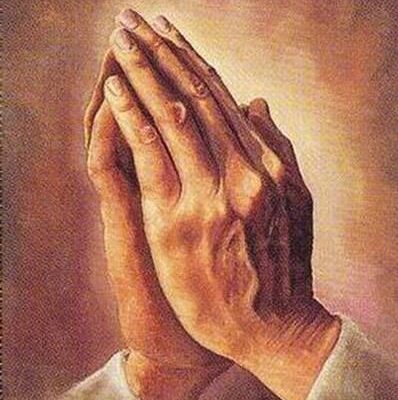Throughout history, the Church has recorded extraordinary events that seem to defy natural explanation—miracles that captivate believers and skeptics alike. All miracles fall into this spectrum, and Eucharistic miracles stand apart, offering tangible signs that point toward the mystery of Christ’s presence in the Blessed Sacrament. These events, in which the consecrated Host visibly manifests supernatural qualities—bleeding, remaining incorrupt for centuries, or even transforming into human flesh—stir wonder and devotion. And yet, they exist within a paradox: they may fortify faith, but they do not prove the truth of Catholic teaching. Their very nature demands belief while resisting scientific certainty, revealing the tension between faith and reason.
Miracles and the Nature of Faith
Faith, by its essence, cannot rest solely on miracles. As Christ Himself said to Thomas, “Blessed are those who have not seen and yet believe” (Jn. 20:29, RSVCE). If miracles functioned as undeniable evidence, faith would no longer require trust; it would be reduced to mere observation. Eucharistic miracles serve not as irrefutable proof but as moments of divine generosity, invitations rather than impositions. They affirm what is already believed rather than compelling belief in the reluctant.
Furthermore, even in biblical history, miracles have not always led to conversion. The Israelites witnessed the parting of the Red Sea, yet they still doubted in the wilderness. Jesus performed miracles in full view of many, yet some still turned away. Miracles demand interpretation, and their impact depends on the disposition of the observer. To the faithful, they are signs; to the skeptic, they are anomalies without clear meaning.
The Mystery of the Eucharistic Miracles
Eucharistic miracles take various forms. Some, like the 8th-century Miracle of Lanciano, involve the transformation of the consecrated Host into visible flesh and blood. Others, such as the miracle of Bolsena-Orvieto in 1263, involve a bleeding Host. Still others center on the inexplicable preservation of consecrated Hosts, such as those in Santarém, Portugal, or in Florence at the Church of Sant’Ambrogio.
Take, for instance, the Miracle of Bolsena, which deeply affected the Church. A priest struggling with doubts about the Real Presence was astonished when, during Mass, the Host bled onto the corporal. This event so moved Pope Urban IV that it contributed to the establishment of the Feast of Corpus Christi, a liturgical celebration affirming the doctrine of transubstantiation. While this miracle strengthened belief, it did not establish transubstantiation as fact—it remains a doctrine that requires faith.
Another fascinating case occurred in 1447 in Lucerne, Switzerland, where a stolen Host was found after an unusual series of events involving swine behaving strangely. While regarded as miraculous, skeptics might dismiss it as coincidental or exaggerated folklore. This illustrates how Eucharistic miracles exist in a space between conviction and ambiguity.
Scientific Inquiry and Miraculous Signs
Some Eucharistic miracles have undergone scientific examination, yielding startling results. Studies on the relics from Lanciano indicate that the flesh is cardiac tissue of human origin, with type AB blood—consistent with findings from the Shroud of Turin. Yet, even these findings do not compel belief. Critics might question whether the tissue was somehow placed in the reliquary after the fact or whether the methods of analysis introduced bias.
Science, by its nature, examines the physical world; miracles, by definition, point beyond it. The Church does not require belief in private revelations or miracles, and the faithful are not obligated to accept Eucharistic miracles as articles of faith. Instead, they are presented as gifts—occasions to reflect, not evidence that demands assent.
The Role of Miracles in a Skeptical Age
Modernity has made belief in miracles more complicated. The scientific revolution and the rise of empirical skepticism have conditioned people to demand measurable proof. Many see faith as a relic of pre-modern thinking, and miracles as nothing more than medieval superstition. And yet, Eucharistic miracles persist, defying easy dismissal. They challenge not only disbelief but also complacency. Even for devout Catholics, they can serve as reminders of the awesome mystery of the Eucharist—a reality too often received with routine familiarity.
The paradox remains: Eucharistic miracles can inspire, but they cannot coerce belief. They are profound signs of divine reality, but they do not override free will. The faithful see them as moments of divine intervention, while skeptics search for alternative explanations. This dynamic ensures that faith remains faith—it requires trust in the unseen, not dependence on the extraordinary.
Miracles as Invitations, Not Commands
Ultimately, the purpose of Eucharistic miracles is not to function as empirical proof, but to call hearts to deeper belief. They act as reminders of Christ’s real and abiding Presence, stirring devotion and reverence. While skeptics may dismiss them, and even believers may approach them with caution, their existence continues to provoke awe and reflection.
To the eyes of faith, these miracles are gifts. They do not exist to force conversion, nor to replace the Church’s theological teaching with spectacle. Instead, they point toward the greater mystery celebrated at every Mass: that Christ is truly present in the Eucharist, not because of extraordinary manifestations, but because He has promised it.
In the end, the greatest miracle of the Eucharist is not found in bleeding Hosts or incorrupt relics but in the daily, quiet transformation that occurs on every altar around the world. There, bread and wine become the Body and Blood of Christ—not in a way that forces belief, but in a way that invites it. Eucharistic miracles may capture the imagination, but faith, as always, remains a choice.
Photo by Josh Applegate on Unsplash


